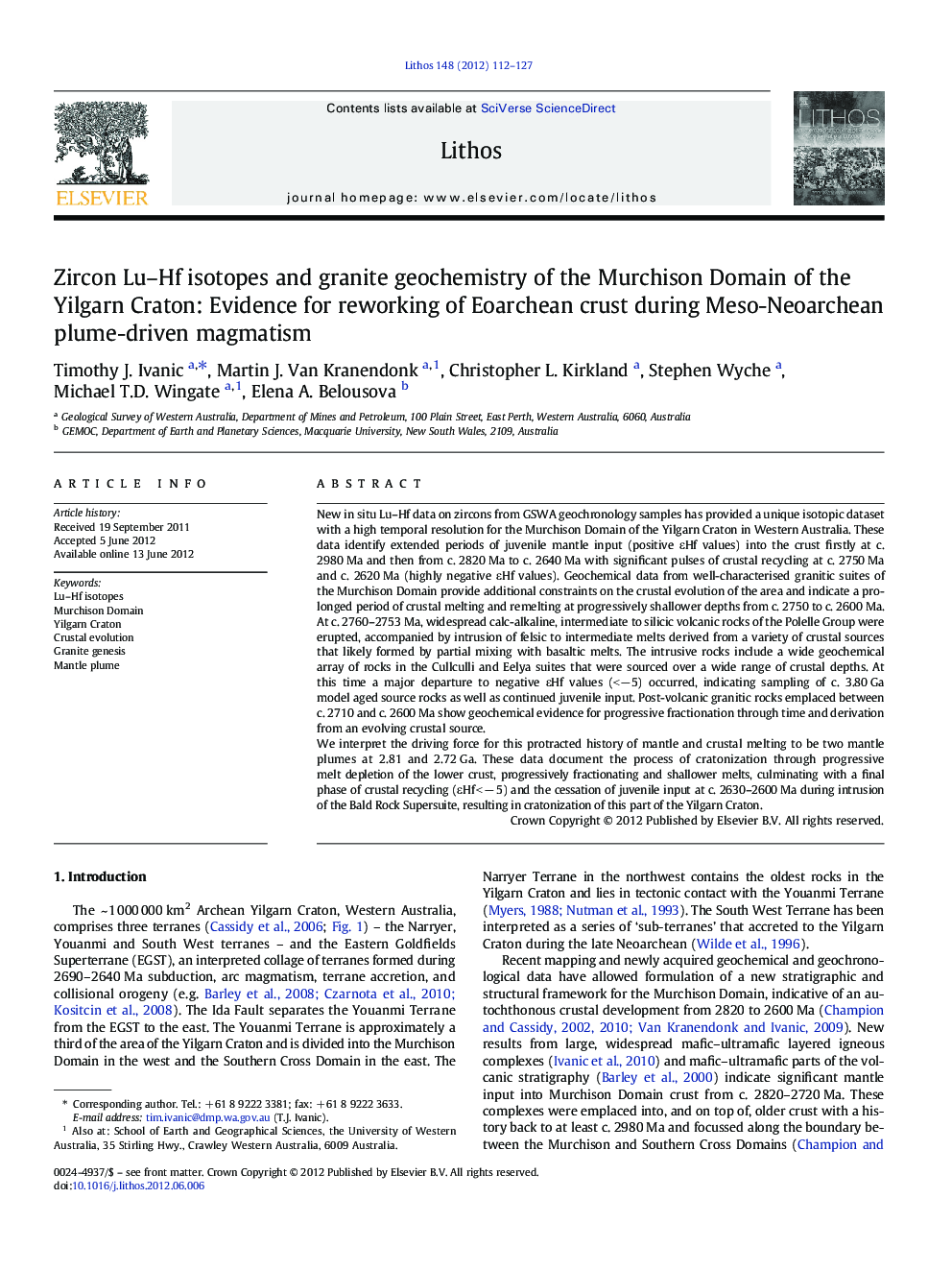| کد مقاله | کد نشریه | سال انتشار | مقاله انگلیسی | نسخه تمام متن |
|---|---|---|---|---|
| 4716546 | 1638705 | 2012 | 16 صفحه PDF | دانلود رایگان |

New in situ Lu–Hf data on zircons from GSWA geochronology samples has provided a unique isotopic dataset with a high temporal resolution for the Murchison Domain of the Yilgarn Craton in Western Australia. These data identify extended periods of juvenile mantle input (positive εHf values) into the crust firstly at c. 2980 Ma and then from c. 2820 Ma to c. 2640 Ma with significant pulses of crustal recycling at c. 2750 Ma and c. 2620 Ma (highly negative εHf values). Geochemical data from well-characterised granitic suites of the Murchison Domain provide additional constraints on the crustal evolution of the area and indicate a prolonged period of crustal melting and remelting at progressively shallower depths from c. 2750 to c. 2600 Ma.At c. 2760–2753 Ma, widespread calc-alkaline, intermediate to silicic volcanic rocks of the Polelle Group were erupted, accompanied by intrusion of felsic to intermediate melts derived from a variety of crustal sources that likely formed by partial mixing with basaltic melts. The intrusive rocks include a wide geochemical array of rocks in the Cullculli and Eelya suites that were sourced over a wide range of crustal depths. At this time a major departure to negative εHf values (<−5) occurred, indicating sampling of c. 3.80 Ga model aged source rocks as well as continued juvenile input. Post-volcanic granitic rocks emplaced between c. 2710 and c. 2600 Ma show geochemical evidence for progressive fractionation through time and derivation from an evolving crustal source.We interpret the driving force for this protracted history of mantle and crustal melting to be two mantle plumes at 2.81 and 2.72 Ga. These data document the process of cratonization through progressive melt depletion of the lower crust, progressively fractionating and shallower melts, culminating with a final phase of crustal recycling (εHf < − 5) and the cessation of juvenile input at c. 2630–2600 Ma during intrusion of the Bald Rock Supersuite, resulting in cratonization of this part of the Yilgarn Craton.
► Murchison Hf data are consistent with plume activity at 2.81 and 2.72 Ga.
► A significant juvenile event is identified at 3.04 Ga.
► Polelle Group is unique in that indicates significant reworking of older crust.
► Reworking is accompanied by diverse melt sources.
► Granites become shallower sourced and more fractionated, leading to cratonization.
Journal: Lithos - Volume 148, 1 September 2012, Pages 112–127